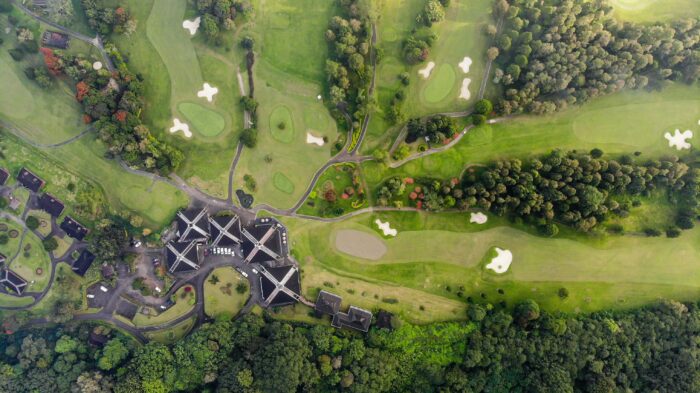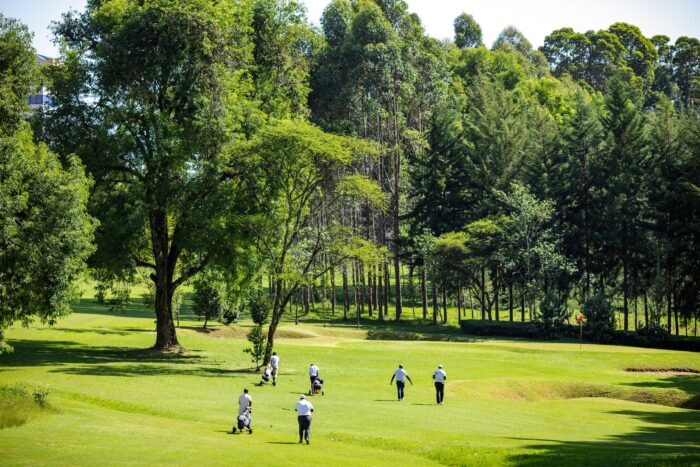Legal advice from the NGCAA: tree legislation
A golf club was recently fined for carrying out work that ultimately led to several trees being felled. However, it could have been avoided with a better understanding of legislation, outlined here, surrounding tree protection.
An Oxfordshire golf club hit the headlines in recent times for the wrong reasons and was ordered to pay more than a £9,500 penalty after damage was caused to protected trees in a village conservation area. Extensive root damage had been caused to trees outside the club during some excavation work to lay a power cable. The damage was such that trees could not be saved and 29 trees were subsequently felled, leading to a court prosecution of the golf club in question. The case serves as a very timely reminder that knowledge of the laws surrounding tree protection is essential for all golf clubs.
Local planning authorities issue Tree Preservation Orders (made under the Town and Country Planning Act 1990) to protect trees, groups of trees or areas of woodland that are deemed worthy of protection. Trees are generally protected because they have an amenity value, for example they enhance a view, help define character or look of a place, add colour or social interest or support wildlife.
Tree Preservation Orders were originally introduced by the Town and Country Planning Act 1947, which means some orders are well over 50 years old and remain in force today.
Even in the absence of a specific Tree Preservation Order, if the location of your golf course is in a Conservation Area, then trees in these areas are generally considered as automatically protected. There are now over 8,000 Conservation Areas in England which have been designated as such due to their special architectural and historic interest. Anyone proposing to carry out work on trees in a Conservation Area or affected by a Tree Preservation Order should serve six weeks’ notice on the council, seeking approval. No work should be undertaken to any affected trees until the work has been formally approved.

Breaches of Tree Preservation Orders are treated very seriously by the courts and the breach is considered a criminal offence. The offence will be committed if a tree is cut down, uprooted, lopped, topped or wilfully damaged / destroyed and cases can be heard in either the magistrates court or the crown court, depending upon the circumstances. There are no sentencing guidelines for breaching a Tree Preservation Order so the sentences imposed can be vast and can vary from case to case. When making decisions on sentencing and fines, the courts will give regard to the financial gain that the defendant has attempted to achieve, the degree of damage that has been done and the culpability of the defendant. There is also a duty to replace a tree removed, uprooted or destroyed in contravention of an order. As we highlighted at the start of this article, it is important to factor in the likely effects on surrounding trees or their root network when deciding to carry out any works on a course. Greenkeepers and contractors carrying out works should be advised to be extremely careful to avoid accidental damage.
We would advise all golf clubs to immediately contact their local planning authority to establish if they are in a Conservation Area or have trees protected by a Tree Preservation Order. If a Tree Preservation Order exists then a copy of the order should be obtained together with maps showing the location of the affected trees. The maps should then be published to all concerned. If the course is in a Conservation Area then all of the trees on the course should be regarded by the club as affected. Again, the club should make a point of notifying all concerned in the management or maintenance of the course who may be affected by the protected status of the trees.
It would be remiss not to point out at this stage that the rules regarding tree protection aren’t always applicable and an exemption does exist. The exemption applies in cases where work is needed to be undertaken to a tree which is dying, dead or dangerous. It is recommended that the tree is checked fully by an expert and a report is obtained first confirming that the tree is indeed dead, dying or dangerous. In these cases, formal permission from the local planning authority need not be obtained. However, we would strongly advise that unless the issue is an emergency for safety reasons, the golf club would be best advised to still give a minimum of a week’s notice to the local planning authority that work is going to be undertaken, whilst supplying at the same time the expert report from a tree surgeon / ecologist specifically confirming the tree’s status. The club should wait to see if an objection is raised before undertaking the work. Whilst this may seem an overly cautious approach, given the severity of the penalties at stake we would not advise a golf club to take any unnecessary risks.
Another important factor to highlight is that just because an order doesn’t affect a golf club at the moment does not mean that the course is safe forever. New Tree Preservation Orders can be issued very quickly and at very short notice. The golf club would be served written notice formally of an intended new order. If a golf club wishes to object then the objections should be made in writing to the local planning authority as soon as possible.

Conversely, some golf clubs may decide themselves to apply for a Tree Preservation Order on their course or on the course boundary to protect trees which give an amenity value to the course. The club should write in to the local planning authority giving reasons why they feel the tree is worthy of protection. The reasons will be considered and an order may be issued, noting that the authority’s power is discretionary in these cases and an order could not be forced.
Given the scenic nature of golf courses, Tree Preservation Orders are a very real consideration and, as we have seen, contravention could prove a very costly mistake. Golf club managers are best advised to draw up a management plan for their course to ensure that the club does not fall foul of the rules.
For any further advice on the above, or any other legal matters affecting your golf club, please contact the CEO of the NGCAA, Alistair Smith, on 01886812943 or office@ngcaa.co.uk















This article fails to mention the Forestry Act and associated Felling Licence legislation which also protects trees, even when there are no Tree Preservation Orders or Conservation Areas.
The best advice would be get advice from an Tree Consultant aka Arboricultural Consultant (preferably one who plays golf, works with golf courses and understands your issues) before contacting the Local Authority.